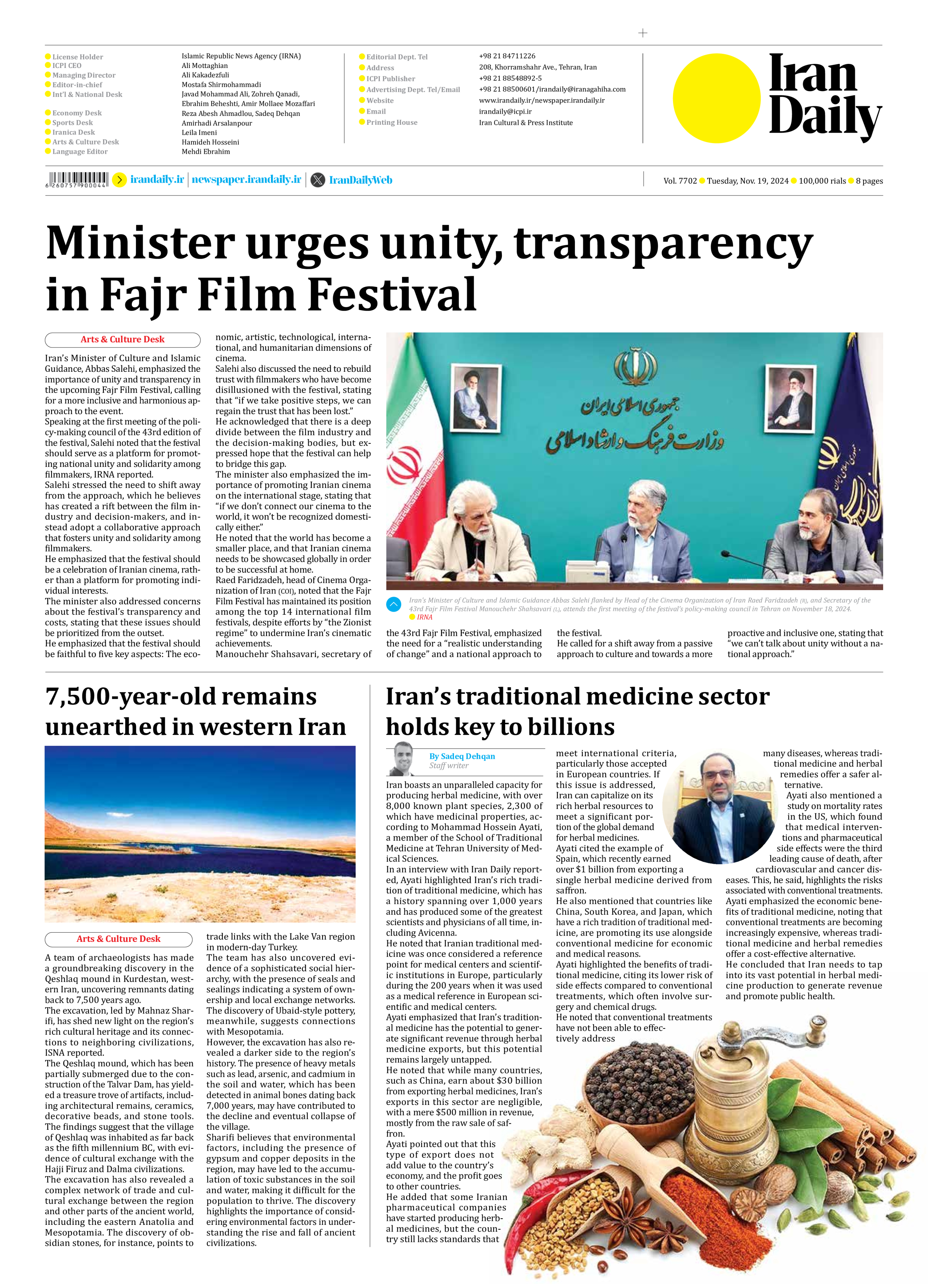
7,500-year-old remains unearthed in western Iran
A team of archaeologists has made a groundbreaking discovery in the Qeshlaq mound in Kurdestan, western Iran, uncovering remnants dating back to 7,500 years ago.
The excavation, led by Mahnaz Sharifi, has shed new light on the region’s rich cultural heritage and its connections to neighboring civilizations, ISNA reported.
The Qeshlaq mound, which has been partially submerged due to the construction of the Talvar Dam, has yielded a treasure trove of artifacts, including architectural remains, ceramics, decorative beads, and stone tools. The findings suggest that the village of Qeshlaq was inhabited as far back as the fifth millennium BC, with evidence of cultural exchange with the Hajji Firuz and Dalma civilizations.
The excavation has also revealed a complex network of trade and cultural exchange between the region and other parts of the ancient world, including the eastern Anatolia and Mesopotamia. The discovery of obsidian stones, for instance, points to trade links with the Lake Van region in modern-day Turkey.
The team has also uncovered evidence of a sophisticated social hierarchy, with the presence of seals and sealings indicating a system of ownership and local exchange networks. The discovery of Ubaid-style pottery, meanwhile, suggests connections with Mesopotamia.
However, the excavation has also revealed a darker side to the region’s history. The presence of heavy metals such as lead, arsenic, and cadmium in the soil and water, which has been detected in animal bones dating back 7,000 years, may have contributed to the decline and eventual collapse of the village.
Sharifi believes that environmental factors, including the presence of gypsum and copper deposits in the region, may have led to the accumulation of toxic substances in the soil and water, making it difficult for the population to thrive. The discovery highlights the importance of considering environmental factors in understanding the rise and fall of ancient civilizations.







